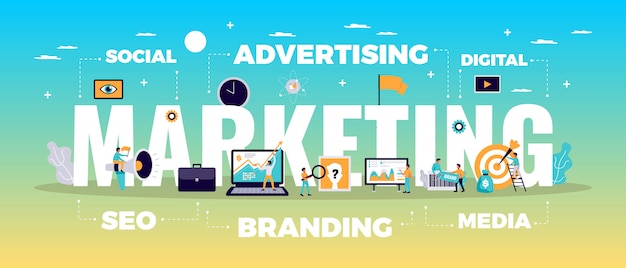Digital marketing has become a cornerstone of modern business strategy. As the internet and digital technologies continue to evolve, so does the way companies reach and engage with their audiences. In this blog, we’ll explore what digital marketing is, why it’s important, and the key components that make up a successful digital marketing strategy.
What is Digital Marketing?
Digital marketing encompasses all marketing efforts that use the internet or an electronic device. Businesses leverage digital channels such as search engines, social media, email, and websites to connect with current and prospective customers. Unlike traditional marketing, digital marketing allows for real-time data analysis and personalized marketing approaches.
Why is Digital Marketing Important?
- Wide Reach: With billions of people online, digital marketing offers unparalleled reach to a global audience.
- Cost-Effective: Digital marketing campaigns can be more affordable than traditional marketing methods, providing a higher return on investment (ROI).
- Targeted Marketing: Advanced analytics and data tracking allow for precise targeting, ensuring your marketing efforts reach the right audience.
- Measurable Results: Tools and analytics platforms enable businesses to measure the effectiveness of their campaigns in real time, allowing for continuous optimization.
- Customer Engagement: Digital platforms provide opportunities for direct interaction with customers, fostering loyalty and brand trust.
Key Components of Digital Marketing
1. Search Engine Optimization (SEO)
SEO is the process of optimizing your website to rank higher on search engine results pages (SERPs). A well-optimized site attracts more organic traffic, enhancing visibility and credibility.
2. Content Marketing
Content marketing involves creating and distributing valuable, relevant content to attract and engage a target audience. This includes blogs, videos, infographics, and ebooks. Quality content helps build brand authority and drive traffic to your site.
3. Social Media Marketing
Social media platforms like Facebook, Instagram, Twitter, LinkedIn, and TikTok are powerful tools for reaching and engaging with audiences. Social media marketing involves creating and sharing content, as well as engaging with followers to build a community around your brand.
4. Email Marketing
Email marketing remains one of the most effective ways to nurture leads and convert them into customers. Personalized email campaigns can drive significant ROI by targeting specific segments of your audience with tailored messages.
5. Pay-Per-Click (PPC) Advertising
PPC advertising allows businesses to place ads on search engines and other platforms, paying only when users click on them. This method provides immediate visibility and can be highly effective for driving traffic and conversions.
6. Affiliate Marketing
Affiliate marketing involves partnering with influencers or other businesses to promote your products or services. Affiliates earn a commission for each sale generated through their marketing efforts, expanding their reach and leveraging others’ audiences.
7. Influencer Marketing
Collaborating with influencers can help amplify your brand’s message to a larger, more engaged audience. Influencers can provide authentic endorsements that resonate with their followers, driving brand awareness and conversions.
8. Mobile Marketing
With the rise of mobile device usage, mobile marketing is essential for reaching audiences on smartphones and tablets. This includes mobile-friendly websites, apps, SMS marketing, and location-based services.
How to Create a Successful Digital Marketing Strategy
- Define Your Goals: Clearly outline what you want to achieve with your digital marketing efforts, whether it’s increasing brand awareness, driving traffic, or boosting sales.
- Identify Your Target Audience: Understand who your ideal customers are, what they need, and where they spend their time online.
- Choose the Right Channels: Select the digital marketing channels that align with your goals and audience.
- Create Quality Content: Develop valuable, engaging content tailored to your audience’s interests and needs.
- Optimize for SEO: Ensure your content is optimized for search engines to improve visibility and attract organic traffic.
- Leverage Data and Analytics: Use analytics tools to track performance, measure success, and refine your strategy based on data-driven insights.
- Engage with Your Audience: Foster relationships with your audience through social media, email, and other interactive platforms.
- Continuously Improve: Digital marketing is dynamic; stay updated with industry trends and continually optimize your campaigns for better results.
Suggested Images for Your Blog
- Infographic on Digital Marketing Components: A visually appealing infographic that breaks down the key components of digital marketing.
- SEO Illustration: An image showing the process of SEO and its benefits.
- Content Marketing Visual: A graphic depicting different types of content used in content marketing (blogs, videos, infographics).
- Social Media Icons: Icons of popular social media platforms to represent social media marketing.
- Email Marketing Campaign: A screenshot or design of a professional email marketing campaign.
- PPC Ad Example: A visual example of a PPC ad on a search engine results page.
- Influencer Collaboration: A photo of an influencer using a product or service, highlighting influencer marketing.
- Mobile Marketing: An image of a mobile phone showing a marketing campaign or app.
By understanding and implementing these components, businesses can effectively navigate the digital landscape, reaching and engaging their target audiences more efficiently than ever before. Whether you’re a seasoned marketer or just starting, embracing digital marketing is crucial for staying competitive in today’s fast-paced digital world.



